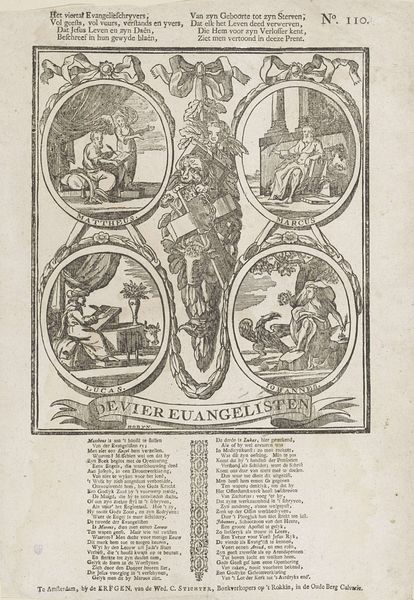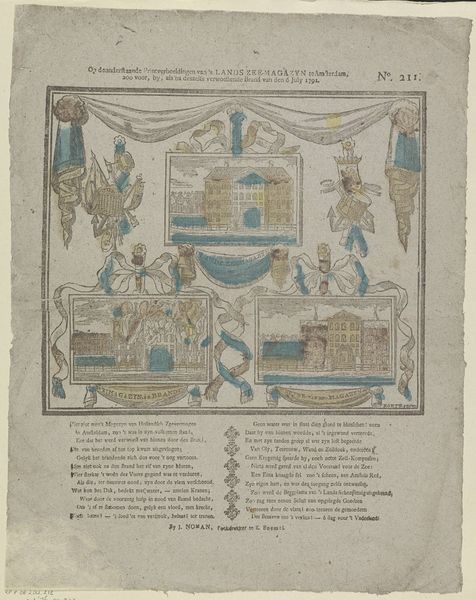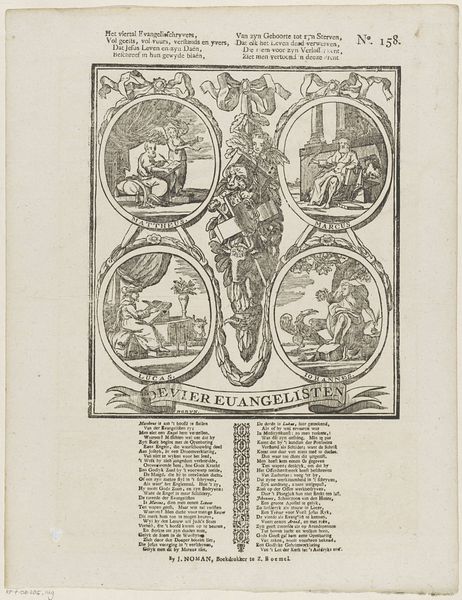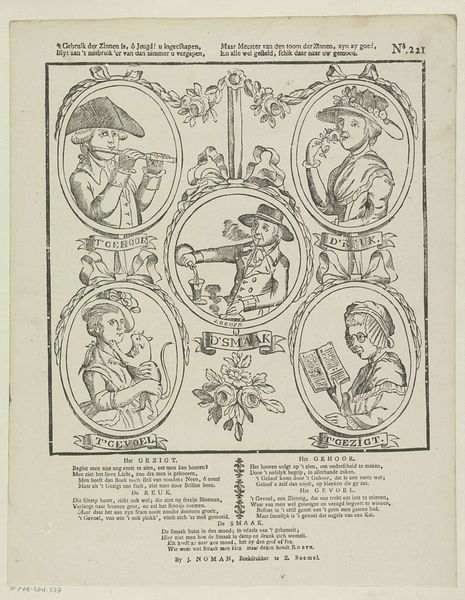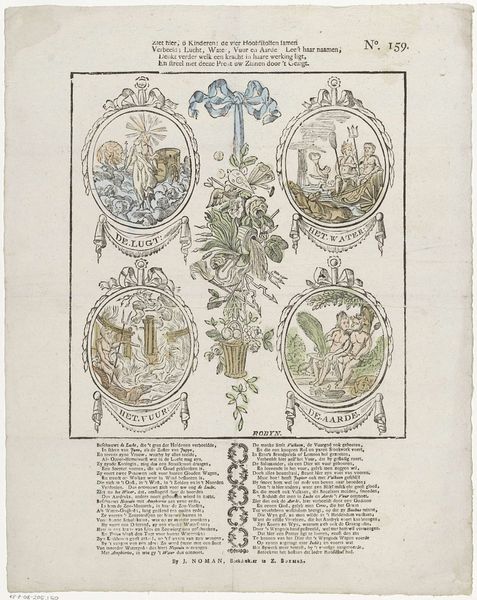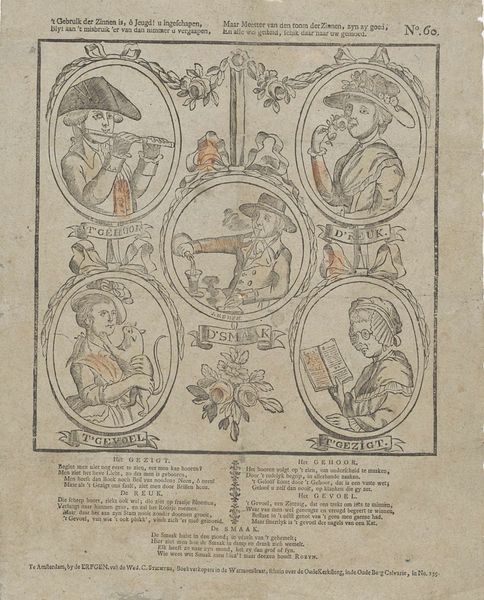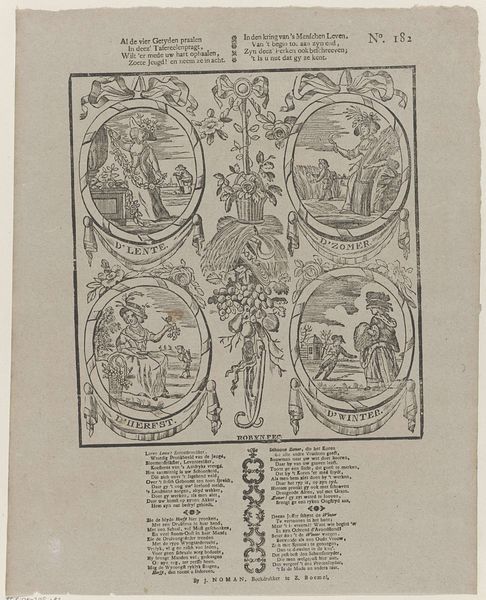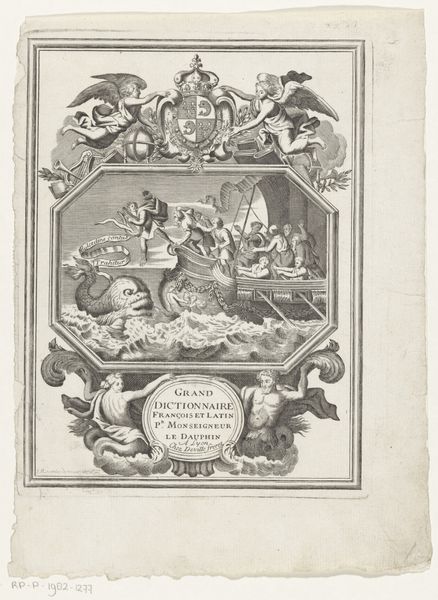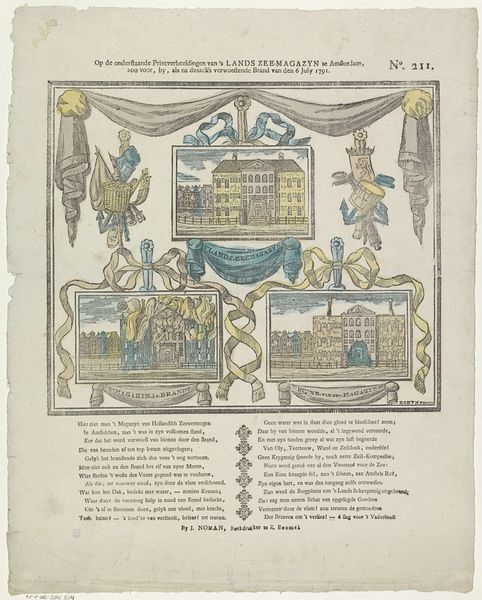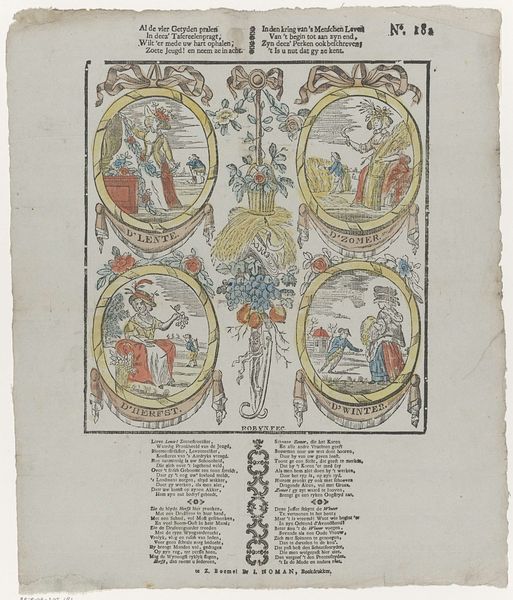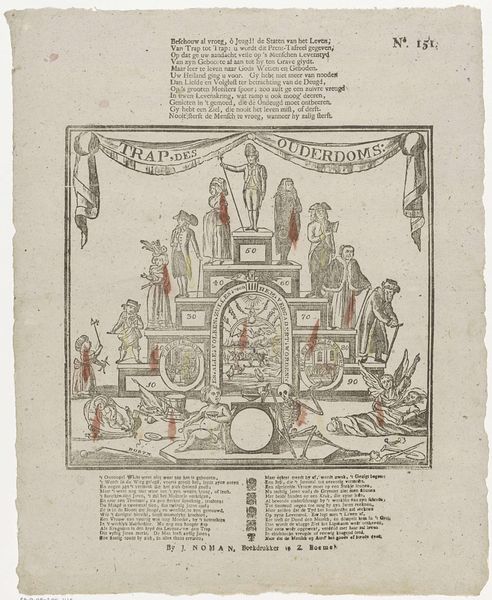
print, paper, engraving
# print
#
paper
#
history-painting
#
engraving
Dimensions: height 412 mm, width 321 mm
Copyright: Rijks Museum: Open Domain
Curator: So, this engraving, "Le quatres évangélistes" from the early 1800s, depicts the four evangelists. The visual layout, those four circular vignettes, reminds me of playing cards! How would you approach a piece like this? Editor: I’m drawn to the fact that it’s a print, making it inherently reproducible. The choice of paper, the engraving technique... what can we say about the means of production in relation to the content? Curator: Excellent question! Think about it: printmaking democratizes images, allowing wider access, yet it's still a process involving skilled labor and specific materials – copper plates, ink, paper, a printing press. How does that tension—between mass production and specialized craft—shape our understanding of religious imagery? Editor: That's fascinating! Were these prints common? And what would they have been used for? I wonder who was making them and for what audience. Were these images adorning the walls of common homes or only existing in monasteries? Curator: Precisely! Consider the social context. The labour that goes into their fabrication impacts the meaning we ascribe to such prints. Who’s consuming this, and what kind of economic exchanges are happening around its creation and distribution? Does its material accessibility change its sacredness? Editor: That’s a great point. Seeing it this way helps me see the print not just as a religious image, but as a commodity with a history of production and consumption. Curator: Exactly. Thinking about art through materials, labor, and distribution gives us new insight into cultural value. I'm glad we explored the multiple possibilities with this artwork!
Comments
No comments
Be the first to comment and join the conversation on the ultimate creative platform.
